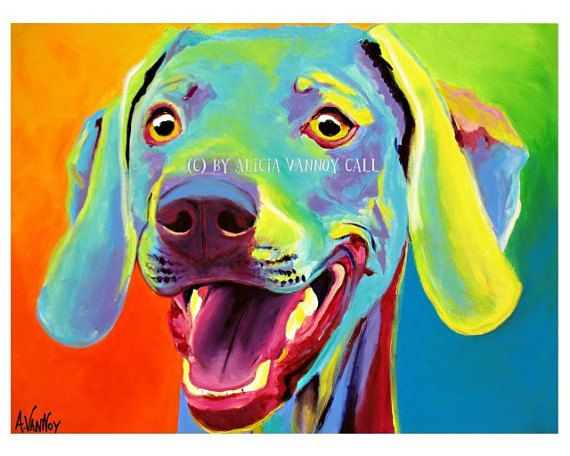
The Weimaraner’s AKC breed standard stipulates that acceptable breed colors are blue, gray, and silver gray.
Before we move on, please watch the following short clip from the marvelous movie, “Mr. Blandings Builds His Dream House,” with Myrna Loy and Cary Grant. In this scene, Myrna’s character, Muriel, is discussing paint colors with the general contractor of her new house:
We thought this was a fitting clip to share in a discussion about color in this breed because as Muriel points out, there is yellow, and then there is butter yellow. The Gray Ghost, as the Weimaraner is known, is not just gray, or even just blue or silver gray per the AKC standard.
The lightest grey colored Weim is what the Germans call “Deer Gray,” or Roe Gray. Compared to other Weimaraner colors, this can almost look like a washed-out tan. The medium gray shade is generally regarded as silver grey, but some people think it’s a color that seems closer to taupe, particularly if the dog isn’t seen in direct sun. The darkest gray is called “mouse gray,” and if a dog is darker than this, it might be a blue Weimaraner.
What do other registries say about color in the breed?
The United Kennel Club standard mentions solid colors in shades ranging mouse-gray to silver-gray, and usually blending to lighter shades on the head and ears. The FCI standard expresses breed color as “silver, roe or mouse grey, as well as shades of these colours. Head and leathers generally slightly paler.”
Color, as we all know, can be subjective. Is your idea of Paprika Red the same as ours? The Weimaraner Club of America’s Illustrated Guide offers a bit more help with regards to color. It reads, “Color should not give the appearance of being brown, liver or black. Coat color resembles a grayish-taupe and varies from very light shades to deep rich shades; all have the distinctive grayish-taupe tone, never a true brown or blue color. Lighter shading on the head and ears is referred to as the “Grafmar Cap”, and is more prominent with age. A distinctly long coat or a distinctly blue or black coat is a disqualification.
As the owners of black dogs know, the sun can impact a dog’s coat color, so we found this next bit especially helpful: “Weimaraners are avid sun bathers; their dilute coat color is easily sun bleached giving it a more brownish cast. In addition, a breed trait while shedding is a “bulleted/spotted” or mottled pattern, which will disappear with the new coat.
The Weimaraner coat color is a dilute, and to the rightful horror of those who truly love the breed, there are “exotic” colors that don’t serve the breed, but may line the coffers of “breeders” interested only in the bottom line. Buyer beware!!!
Colored Point Weimaraners (feel free to cringe) have tan points similar to the markings a Doberman Pinscher.
“White blaze” Weims have a chest spot that is far larger than the small spot allowed in the standard. White markings in other areas also disqualify the dog from a conformation ring (and should be reconsidered before breeding). There is also a “piebald” dog that results in a spotted or speckled appearance, and while some opine this appearance gives a dog a really unique look, “unique” isn’t always good, and “just because one can, doesn’t mean one should” breed for this. One site we came across extolled the virtues of the “twelve colors” the Weimaraner comes in. How does this help the breed?
Image: Weimaraner byAlicia VanNoy Call – dawgpainter
http://lvcall.wix.com/dawgart
https://www.etsy.com/shop/dawgpainter
www.dawgart.blogspot.com
